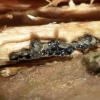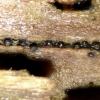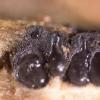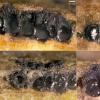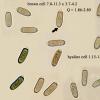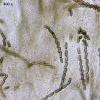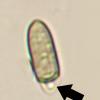
27-11-2025 12:01
Thomas Læssøehttps://svampe.databasen.org/observations/10496727

27-11-2025 11:46
Thomas Læssøehttps://svampe.databasen.org/observations/10493918

27-11-2025 11:31
Thomas LæssøeCollectors notes: Immersed ascomata, erumpent thro

23-09-2025 13:31
Thomas Læssøehttps://svampe.databasen.org/observations/10534623

25-11-2025 14:24
Thomas Læssøehttps://svampe.databasen.org/observations/10490522

26-11-2025 18:13
The entire run of Mycotaxon is now available throu

25-11-2025 11:03
Mick PeerdemanHi all,One of my earliest microscopy attempts, so
Hi to all
My friend F.J. Balda sent me this fungus growing on very wet, semirotten, wood of Pinus sylvestris that makes groups of inmersed and blackish perithecia 0.5-0.6 mm high inside + or - developped blackish stromata. Only the blackish and roundish papilla erumpent.
Asci long-stipitate up to 155 x 9 micr., with a refractive, small, IKI negative apical apparatus. The greenish-brown mature ascospores have a non-septate dark cell with an apical pore and an small hyaline cell under the wich we can to observe a very small hyaline papilla (?).
If this fungus belongs to Endoxyla only E. xanthostroma is close, but the lack of yellowish tissues and the hyaline papilla of the ascospores don't fit with this species.
Any idea?
Thanks again
Hi Enrique,
E. xanthostroma is a good option, you said it. On the fourth photo, we can see yellow tissues, do you agree ?
The other features fit almost well with E. xanthostroma.
Alain

in fact she does mention the "cellula hyalina" (p. 305 and figs. 21-22).
Regards
Martin
Hi Martin
The hyaline cell was described, and it was drawn by Untereiner, but not the small hyaline appendage under this cell!
